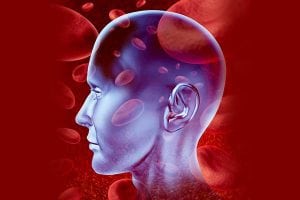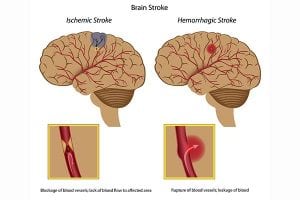 A stroke occurs when blood flow to a part of the brain is cut off, causing brain cells to start to die due to lack of oxygen. This causes a loss of abilities related to whichever functions are handled by the affected area of the brain. About 800,000 people experience a stroke per year, and it is the fifth leading cause of death and the leading cause of adult disability in the United States.
A stroke occurs when blood flow to a part of the brain is cut off, causing brain cells to start to die due to lack of oxygen. This causes a loss of abilities related to whichever functions are handled by the affected area of the brain. About 800,000 people experience a stroke per year, and it is the fifth leading cause of death and the leading cause of adult disability in the United States.
87 percent of strokes are ischemic, and occur when there is an obstruction within a blood vessel that supplies blood to the brain. The rest of the strokes that occur are hemorrhagic, which occur when a weakened vessel ruptures and bleeds. Risk factors for strokes include inactivity, obesity, heavy drinking, smoking, high cholesterol, high blood pressure, diabetes, and cardiovascular diseases. Individuals with a family history of strokes are also more likely to experience one.
 Symptoms: The symptoms of a stroke depend on where the stroke occurs and how much damage there is. For example, a minor stroke might involve weakness of a leg or arm, while a large stroke could involve paralysis and trouble speaking. Other symptoms include headache, trouble walking, vision problems, and numbness in the arm, leg, or face.
Symptoms: The symptoms of a stroke depend on where the stroke occurs and how much damage there is. For example, a minor stroke might involve weakness of a leg or arm, while a large stroke could involve paralysis and trouble speaking. Other symptoms include headache, trouble walking, vision problems, and numbness in the arm, leg, or face.
Treatments: The treatments needed depend on the type of stroke experienced, but all strokes require immediate medical care. The longer a stroke goes untreated, the greater potential there is for brain damage and disability. Medications may be used to stop blood clots from forming, and blood clots can be removed mechanically. The artery may be opened up to prevent another stroke, and blood vessels can be surgically repaired by coiling or clipping. Stroke patients may also need physical and speech therapy.




